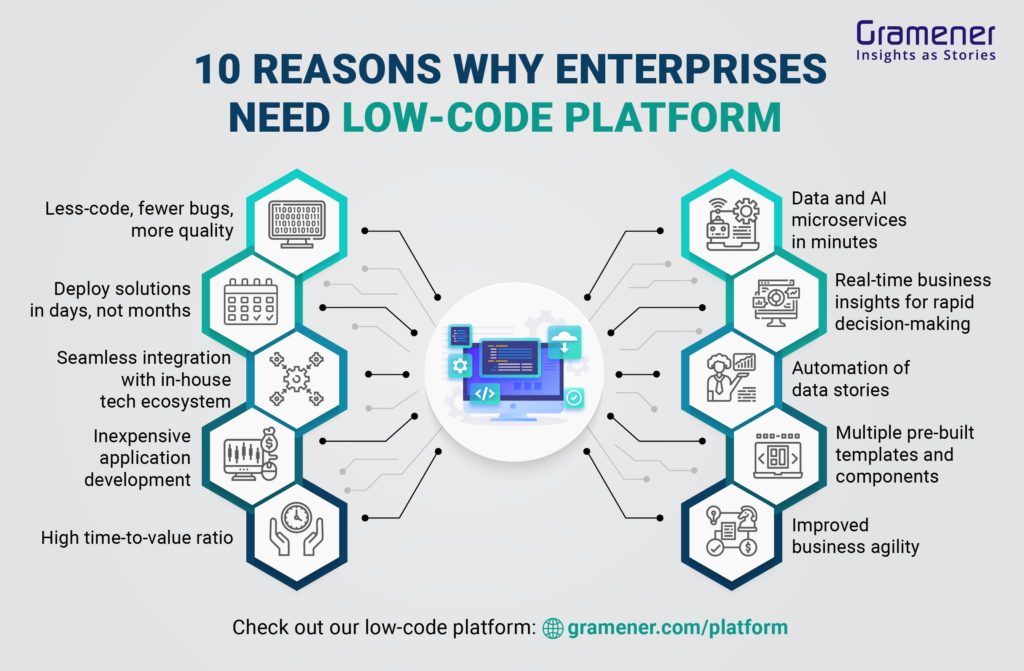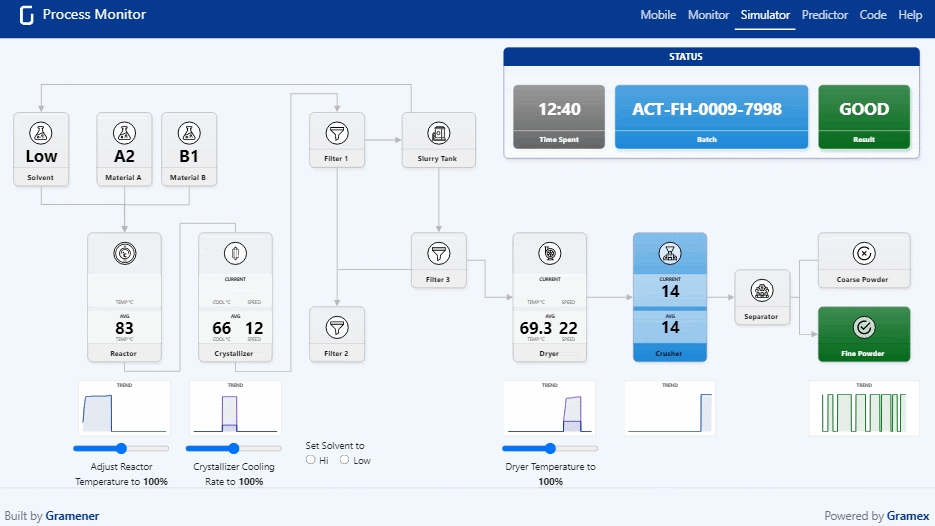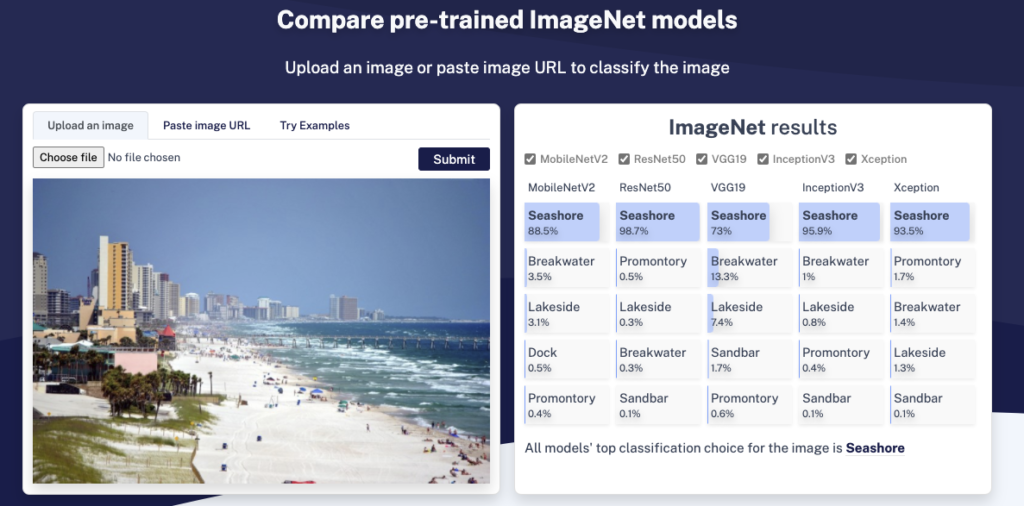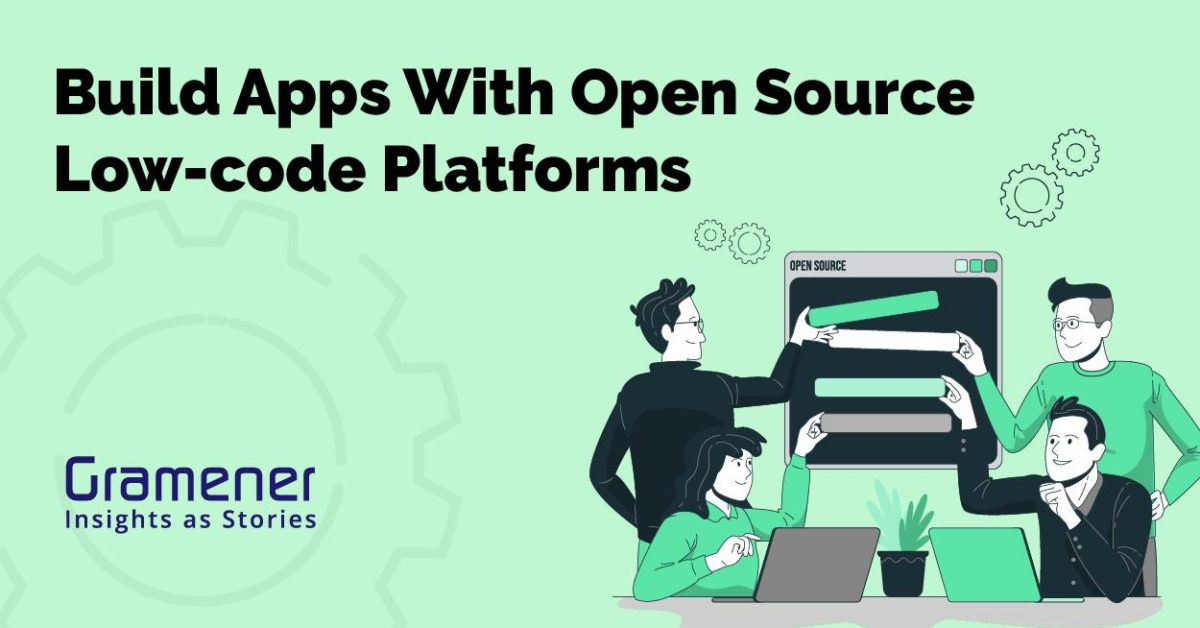Being an organization that leverages the power of low-code, we’ve made a part of Gramex, our low code platform, open-source. The community edition of Gramex is free and helps citizen developers adopt the low-code approach to build analytics solutions.
When it comes to choosing technologies, enterprises and business leaders need expert advice. And why not! They are investing time and money expecting a better ROI in exchange.
Let’s say you are an enterprise sitting on a mountain of insightful data. You want to solve a process-optimization problem or you want to cluster your customers based on data points.
You’re faced with two options – either build a solution from scratch to solve your exact problem, or purchase a tool to do it for you.
The first option is expensive and takes days or months of developer effort in coding, testing, and bug-fixing.
The second option is good if you want a quick solution, but the costs are prohibitive and it may not solve your exact problem, and customizing it is a major pain point.
This is why in recent times, enterprises are beginning to prefer a third option – low-code platforms that give you the best of both worlds.

Table of Contents
What is a Low-Code Platform?
Low-code means developing a solution without writing a single line of code unless you want to, which creates opportunities for customization.
A low-code platform contains components, templates, and microservices that serve as boilerplates for the basic functionalities so that you can focus more on the solution at hand rather than the code.
Check this out:
Gartner predicts that low-code platforms will drive 65% of all app development functions by 2024. Moreover, about 66% of big companies will use a minimum of four low-code platforms in their business environment.
But going in for a low-code analytics platform itself is a big investment right? Not really. This is where the open-source low-code platform comes into play.
What is Open-Source Low-Code Platform?
Open-source software is accessible to everybody. The code can be shared, modified, and inspected by anyone.
Low-code is one form of software development that uses minimal coding to create apps and procedures. Users who do not have formal coding knowledge can use this technology to develop applications since low-code platforms use drag-and-drop features and visual interfaces instead of complex coding languages.
The open-source low-code platform allows individuals without coding expertise to avail a free, fast, and easy solution to develop software applications.
Benefits of Open-Source Low-Code Platform
Development In No Time
Complex coding languages are not required when building applications using low-code platforms. Programmers and even individuals who do not possess coding expertise can use drag-and-drop capabilities and visual interfaces to create applications that fulfill their requirements quickly. This vastly reduces the turnaround time it takes to deploy the solutions.
Economical/Inexpensive
The source code for open-source software is free for all. Unlike proprietary software, there is no licensing or subscription fee. This lowers the costs for users significantly.
Additionally, low-code platforms drastically reduce the number of man-hours it takes to develop an application. You don’t require expert developers who are expensive to hire, nor do you need an army of programmers to create the solution, substantially bringing down your overall costs.
Increased Productivity
Open-source low-code solutions require fewer investments, making their business cases easier to execute and implement. The manpower and the level of expertise needed to deliver low-code solutions are also less than traditional development projects, which substantially lowers the turnaround time. All these factors contribute to enhanced productivity.
Flexible
Low-code platforms can develop a wide array of applications across industries. Thanks to the source code being open, developers can customize it to suit their unique requirements, lending open-source low-code platforms a universal appeal and flexibility.
Quick and Easy Transformation
Even before the pandemic, organizations were adopting digital transformation to remain competitive and continue to deliver value to their customers.
The global pandemic has further accelerated the trend of customers conducting their business online instead of physical outlets, driving more companies to digitally transform themselves within an aggressive timeframe.
Open-source low-code solutions can deliver fast and cost-effective applications that can be tailor-made to the requirements of any company, allowing businesses to meet market demands and retain their customer base successfully.
Cons of Open-Source Low-Code Platform
Lack of Support
Proprietary software guarantees the support and service of the company that has licensed the application. While an enthusiastic community of developers usually grows around the popular open-source platforms, there is no assurance that the bug or issue you face will be resolved within a reasonable timeframe.
Security Risks
The unwanted consequence of a universally accessible source code is that it can be modified with malicious intent, making every application in the world that uses the code potentially vulnerable to a virus attack.
Proprietary API
A proper API allows a tool to perform many functions. Lack of API can severely restrict an application from delivering value to a company.
Lock-in
Once an organization commits to a low-code solution, there is no going back. As the requirements become more sophisticated, more expert developers are needed to execute and implement the processes.
Furthermore, low-code platforms are not always compatible with independent programming or development if additional coding is required.
Why Take Open Source Route for Low Code Platforms
Picture this: In a global survey of 950 IT leaders in 2020, 95% of them think that open source software is strategically important. Nearly half of the respondents say that Databases and Big Data & Analytics are two of the top open-source software (OSS) they use.
Going beyond numbers, let’s look at the practical aspects at play here. OSS helps enterprises keep expenses down by eliminating licensing costs that result in high capital expenditures and vendor lock-ins.
But, did you know:
A passionate community develops and maintains it and hence offers a better quality of software. Developers around the world contribute fixes, not just to improve the software, but to hone their own skills in the process.
OSS also fosters innovation by using the latest technology. In fact, 86% of IT leaders say that the most innovative companies are using enterprise open source.
Now that we’ve looked into both low-code platforms and OSS, let’s look at what we get when we combine the two.
Open Source Low-Code Platform is Best of Both Worlds
One of the possible drawbacks of low-code platforms is that many of them in the industry comes with high licensing costs that recur annually.
With an open-source low-code platform like Gramex, you get access to a robust framework with drag-and-drop functionality. With ready-to-use components like file handlers and customizable charts, you can code only where it’s required.
The open-source low-code platform can integrate seamlessly with your existing applications and services and tap into your existing data sources.
Let’s look at the benefits:

Quality of Platform
Developers have a wide variety of skill sets. One might be an expert at cleaning data, while another might excel at visualizing it. The open-source community brings these diverse skills together under one roof. Hence, an assortment of components is constantly being added (free of cost!) and bugs are consistently weeded out, promising more functionalities and a high level of robustness and stability.
Faster Go-To-Market Time
With the basic components already in place, you can build your solution faster by adding only the code required for your particular application. In fact, a study shows that a low-code platform can dramatically speed up the software development process and reduce the go-to-market time by 50%.
Saving on Developer Bandwidth
Developers can save weeks or months of effort by using existing code templates. In fact, even citizen developers can code with open-source low-code platforms, as they are not as code-intensive as the usual solutions. In fact, a study from Mendix states that 24% of low-code users have 0 programming knowledge.
Open Source Community
The open-source community serves as a pool of knowledge for coders and citizen developers, thereby helping anyone who codes how to solve a certain problem. This benefit is often lost in proprietary platforms, where one has to depend on tech support.
Difference between Open-Source Low-Code Platform & Licensed Low-Code Software
Cost
Users of open source and licensed solutions are charged for different reasons. Technically, open-source software is free. However, subject to your long-term requirements and advances in technology, you may have to invest in support functions, innovation, implementation, and infrastructure.
The cost of licensed software depends upon how sophisticated a solution it delivers. This includes annual licensing fees, support services, integration, and base fees.
Control
Developers can modify the source code in open-source solutions, allowing them to control to customize according to their needs. Increased control also leads to more flexibility, facilitating citizen developers to benefit from the open collaboration. Proprietary solutions, on the other hand, are within the owner’s complete control.
Sustainability
Anyone can add or modify features to an open-source solution, allowing developers to continuously correct and improve the codes, resulting in better software sustainability. Indiscrepancies that the original publishers may have missed can be rectified without restrictions. Licensed solutions do not offer such an advantage to their users.
Performance
Drivers are often missing in open-source solutions, which is a predictable occurrence when a large community of users accesses the code. The use of generic drivers and lack of proper support sometimes put entire projects at risk. The closed group support of proprietary software delivers better performance.
The End-User
Proprietary software is usually developed, keeping in mind the needs and requirements of a target base. Open-source solutions are more fluid when it comes to their end-users, who have free and easy access to view and modify the source code.
Gramex Low-Code Platform: Build What You Want, How You Want
Gramex is an ever-evolving low-code platform that can enable you to build data apps in a day. Yes, you read that right – in a day.
With its set of microservices and configurations, Gramex simplifies development right from the data acquisition stage right through to the deployment stage.
New features are added every month, be it new charting libraries or adding new data source connectivity, or caching. You can check out the complete set of features in our Gramex Guide.
As with any OSS, the list of open issues is available for all developers to tackle according to their skill set and level. This ensures that a collective effort goes into maintaining the code.
Gramex also has extensive documentation for every single feature. This makes it easy for coders and citizen developers to quickly get things done.
Gramex comes in two flavors.The community edition is open source, while the enterprise edition has added security features and a few other add-ons.
Data Apps Built on Gramex Open Source Low Code Platform
All the examples shown below are built on top of Gramex and by taking a low-code machine learning approach.
ML-Driven Digital Twin of Pharma Manufacturing
One of our clients wanted to monitor the organic synthesis process in their factory. With this, they wanted to predict the quality of the production. We built this solution in just 3 days using Gramex and eliminated 2,500 lines of code in the process.

ML-Driven Image Classifier
We built this AI/ML-based image algorithm classifier using Gramex. Using this low-code app, you can compare pre-trained ImageNet models like MobileNetV2, InceptionV3, and Xception. So if you upload an image of a seashore, you can compare the results of these algorithms to find out which one best suits your requirements.

Conversational AI Tool
An AI-driven conversational application can help business users by conveying insights. We built a conversational AI with our open source low-code platform, that narrates business insights from media performance dashboards.
Get Started with Open Source Low-Code Platform
Open source low code platforms are ideal for small businesses or small teams within enterprises that would like to deploy a quick solution to a problem.
The robust nature of low-code open source platforms like the Gramex community edition allows you to try your hand at rapid prototyping (if that’s what you need) and experiment with the features available.
They also conserve developer bandwidth, reduce go-to-market time and avoid the costs associated with licensing and lock-ins.
If you would like to try Gramex, the Gramex data sheet is a good place to start. This will help you understand the features of Gramex, along with the benefits of open source and enterprise edition of our low code platform. You can also check out our exclusive webinar on low-code platforms. It teaches the importance of low-code platforms. It also focuses on how to build data and AI products with a low-code development approach.
Watch our recorded on-demand version of the low-code platform webinar.


The data talked about inside the write-up are several of the best available.
Your way of telling everything in this piece of writing is truly good, every one can without difficulty be aware of it, Thanks a lot.
Great post, you have pointed out some superb details , I too think this s a very excellent website.
Well I really liked studying it. This post offered by you is very effective for correct planning
Pretty! This has been a really wonderful post. Many thanks for providing these details.
Touche. Outstanding arguments. Keep up the good work.
I think you have mentioned some very interesting details , thanks for the post.